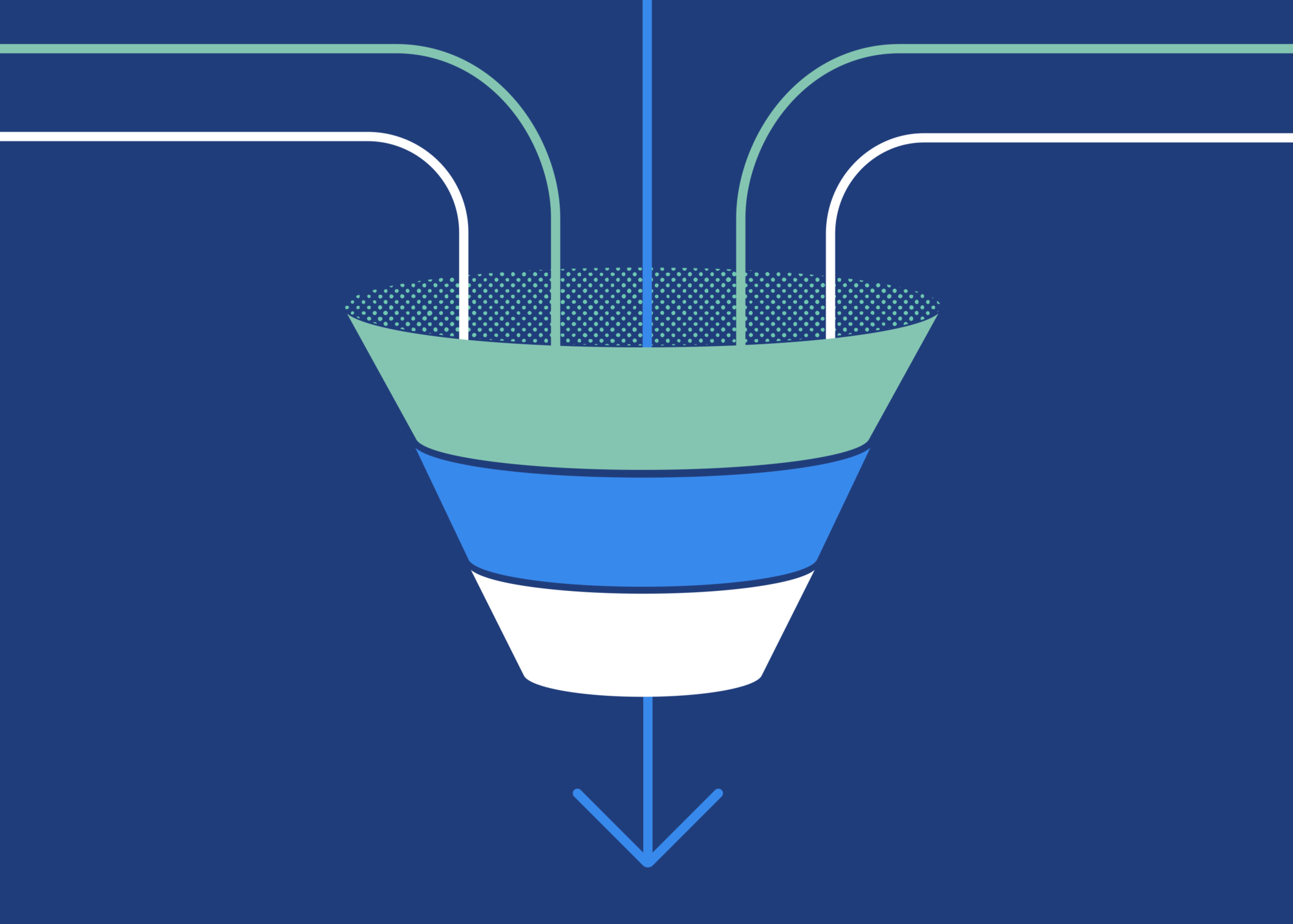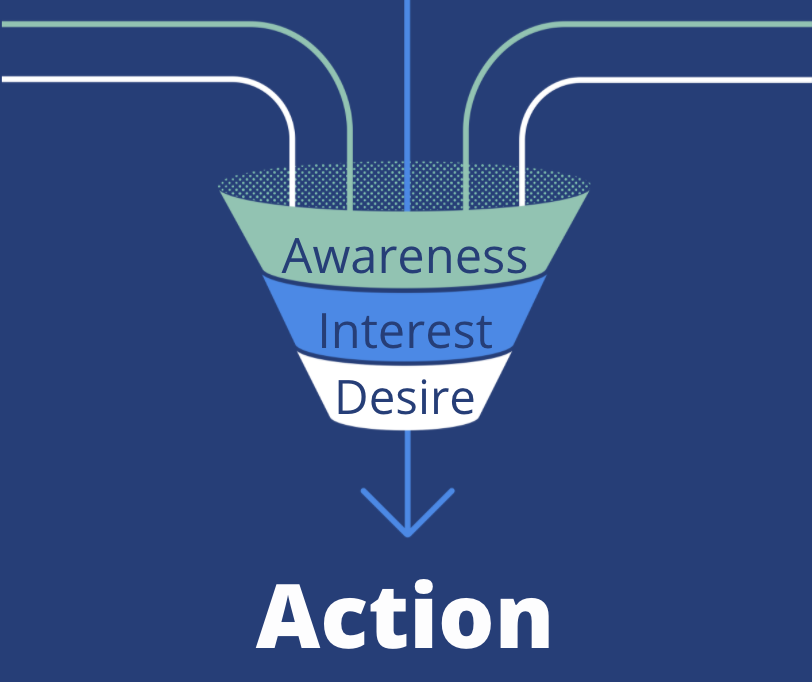You may not know exactly where your leads and conversions are coming from, but you know they’re not from thin air.
Lead attribution modeling paints the picture of your customers’ journeys from humble leads to full-fledged conversions. What enticed them to take the plunge? How many times did they have to interact with your digital presence before that happened? Which of your marketing channels are providing the best return on your precious investment? Your leads’ paths to their buying decisions can tell you a whole lot about your campaigns, from what’s working to what isn’t.
It’s the job of your lead attribution software to provide the answers to all of the above. It will show you the data from your leads mapped out in an easily digestible form that gives you the insights you need to make the most of your marketing and advertising budgets and keep your campaigns running smoothly.
To take this further, let’s apply this to the marketing funnel The classic AIDA model of Awareness, Interest, Desire, and (hopefully) Action has existed for over a century and different mutations of this process exist to account for the many business models that have sprung up since.
The goal of any lead attribution software is to track the customer journey into eventually converting, and in doing so it puts the different phases in the spotlight. Since you see the various touch points your lead took along the way, you can deduce that their awareness was cemented on their first interaction, their interest grew and turned into desire over subsequent touches, and finally the action phase set in when they made their purchase.
Getting started with attribution modeling
To get things started with attribution software you use, you’ll need to decide a few things. These items are set based on your campaign’s specific goals and the information you want to learn about your leads.
- Choose an attribution model. This will determine how much credit is given to specific touchpoints in the customer journey.
- Set an attribution window. This is the period of time in which a touchpoint can be credited for an eventual conversion.
So which model should you choose? There’s quite a few of them, and they wouldn’t exist if specific situations didn’t call for them. You could use a simple model with a single touchpoint that gets 100% of the credit for a conversion, or go with multi-touch attribution and divide credit in various ways across multiple touchpoints.
That said, the last non-direct click model is emerging as a popular favorite for most general purposes – it gives all of the credit to the last traffic source your lead hit before they went to your site to convert.
Let’s focus on the “non-direct” part – it’s important because when you instead give credit to the last direct interaction, you’re essentially ignoring how the customer got there and just giving all the credit to your own site. You want to credit the journey, not the destination. You already know what the end goal is supposed to be.
Different models for different cases
Beyond that, specific contexts call for different attribution models.
- First touch: If you want to gauge brand awareness, this model will tell you what initially led to the lead’s interest.
- Time decay: If your campaign is time-sensitive, try the time decay model since it gives more credit across multiple channels but with emphasis on the interactions that are more recent to the conversion.
- U-shaped: This model will divide credit between first and last touches to ensure the initial source that created awareness and deciding factor are both credited.
- W-shaped: This model will cover first, last, and specific points in between to give you a better look into the overall journey.
And those are only the standard models! Just like how a tailored suit is going to fit you better, a customized marketing attribution model is created to your specifications. By taking your business’s unique priorities and goals into consideration, you can more accurately track the exact info you want to see about your leads.
Each business is unique and each ad campaign happens under different circumstances. Knowing the campaign’s goals (beyond simply generating revenue) and knowing your options will make your decision much easier.
What to look for in your lead attribution platform
There’s a lot of lead attribution software out there. Google Analytics is the most well-known, but there are plenty of other services with their own selling points. It can be overwhelming to figure out which product is the best for your marketing team. After all, in this case they’re being marketed to instead doing the marketing themselves, so certainly every option looks shiny and attractive on its surface. And of course, not all of this software is created equal.
Is the data that your software is collecting completely impartial? You’ll want to make sure there’s no bias introduced into the insights you’ll be receiving.
Does the software cover all of the channels you want info on? Some platforms cover fewer channels than others, and you want as comprehensive of a picture as possible.
When you combine any of those factors with a price point that works for your business, it’s clear that it may take some research to figure out which product is best for you, but going in being aware of your business’s needs will make the process much easier.
By keeping a close eye on the results your lead attribution shows you, you’ll be able to see which channels are generating the most bang for your buck. For all the talk about different models applying to different businesses, this is where you may start with one model and determine it’s giving improper credit to certain channels you don’t feel are as important, so you apply a different model and go from there.













